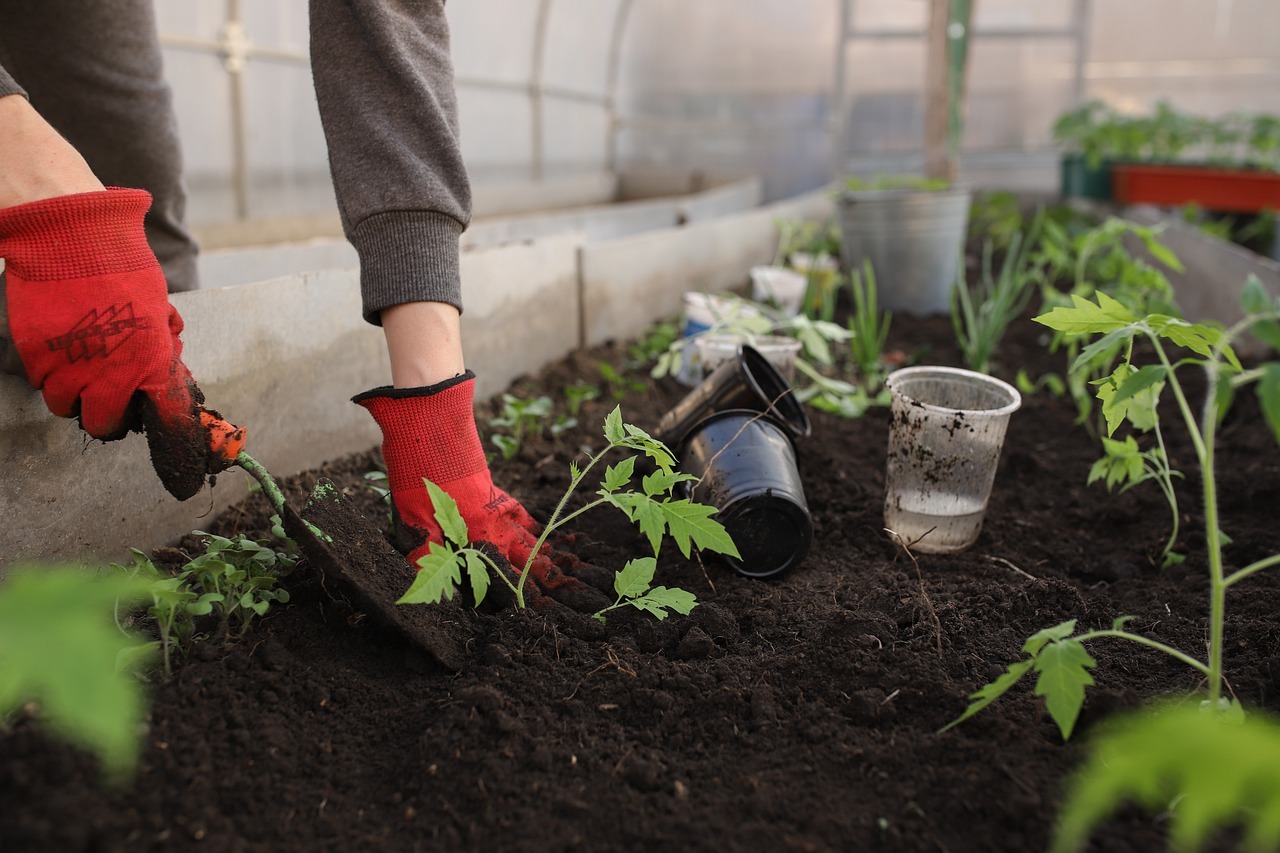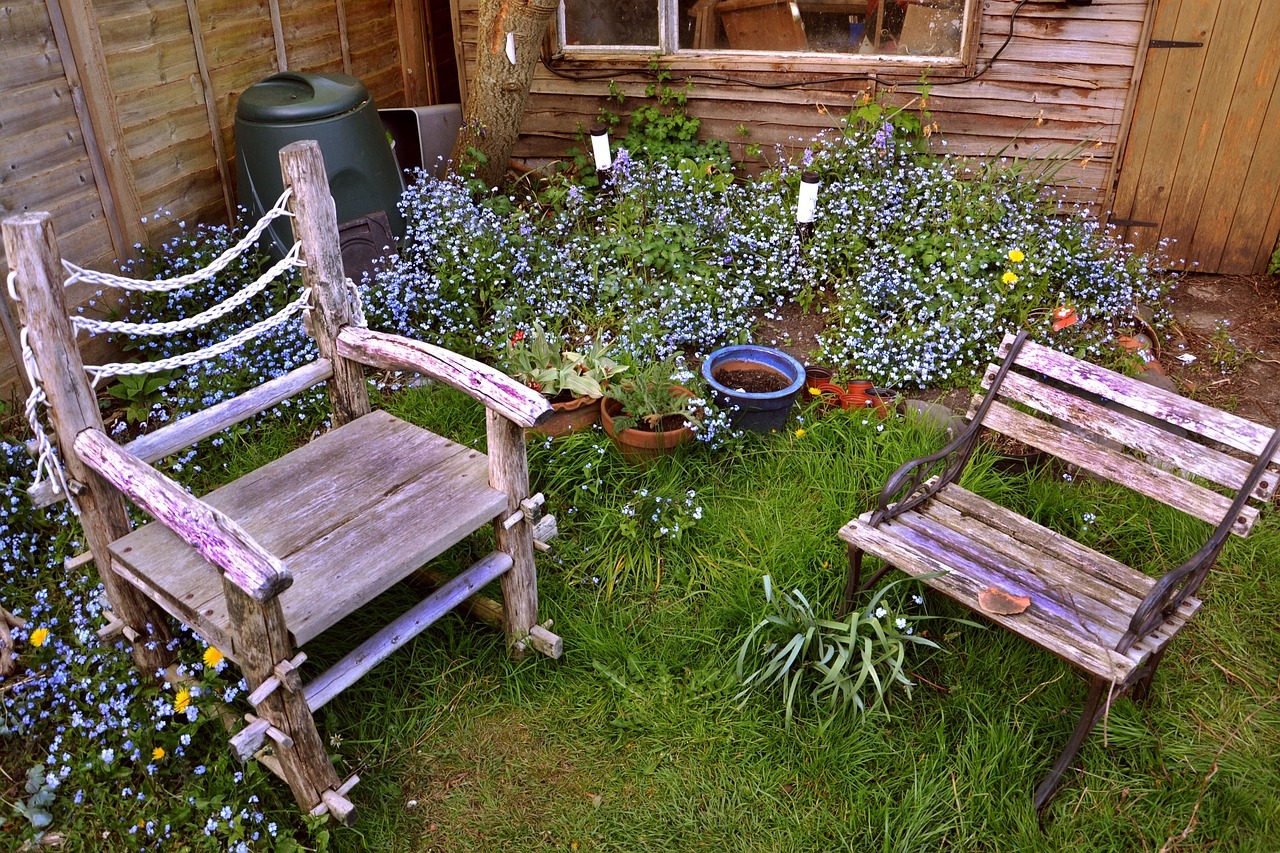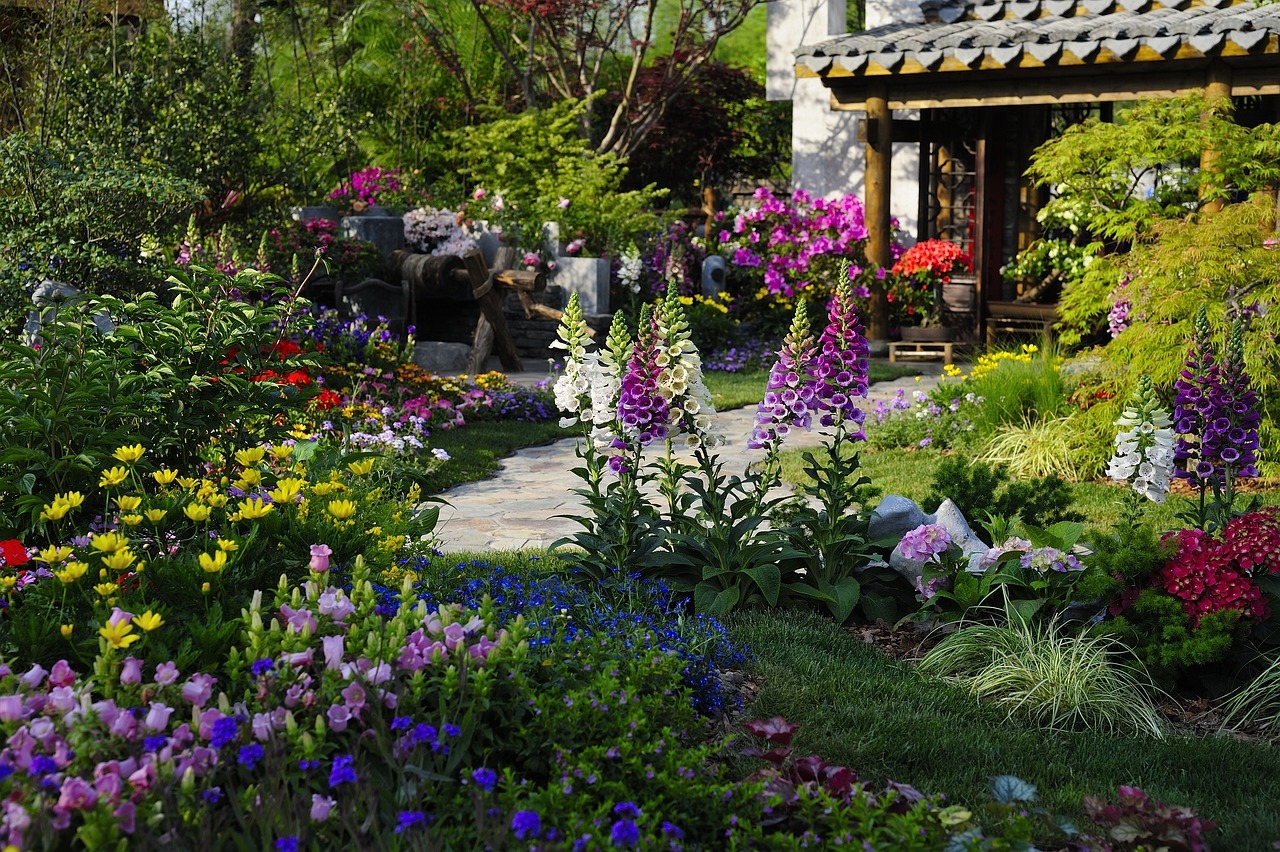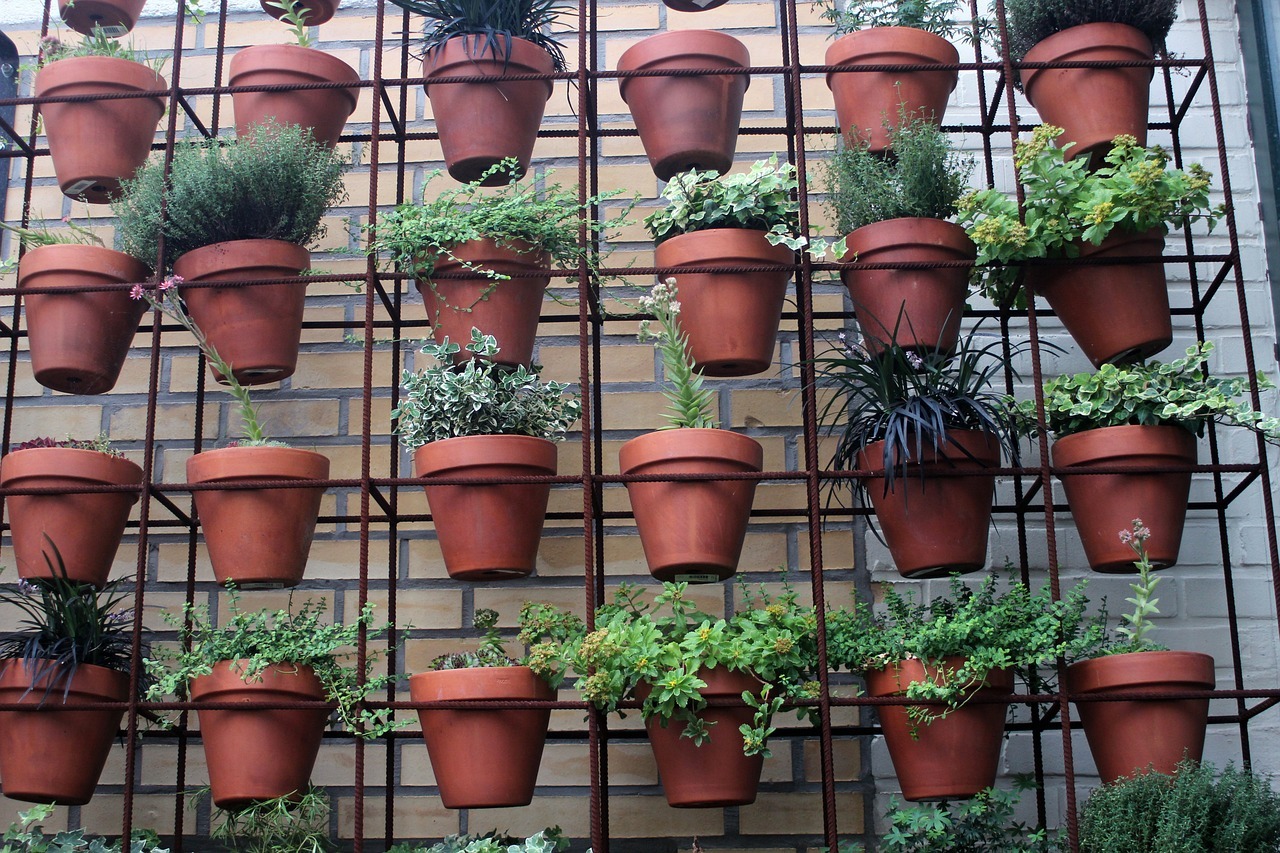Creating a thriving garden can be an exciting and rewarding experience, but it can also be a challenge for beginners. The thought of planning, planting, and maintaining a garden can be overwhelming, especially if you don’t have any prior experience. However, with the right tools, knowledge, and approach, anyone can create a flourishing garden that can produce fresh, delicious produce and provide a relaxing outdoor oasis.
This is why we have created a beginner’s guide to creating a thriving garden. In this guide, we will cover the basics of gardening, from choosing the right plants for your space to maintaining your garden throughout the growing season. Whether you have a balcony or a backyard-or even a terrace with ample space to grow plants, this guide will help you create a beautiful and productive garden.
Planning Your Garden
When it comes to gardening, choosing the right location is essential. Firstly, consider the amount of sunlight the area receives. Most vegetables require at least six hours of direct sunlight per day to thrive. Secondly, the soil quality is crucial. Ensure the soil is well-drained and nutrient-rich. Avoid planting in areas that are too wet or rocky.
Consider the accessibility of the location. It should be easy to reach and have a water source nearby. Finally, think about the surrounding environment. Avoid areas near large trees or buildings that may block sunlight or compete for water.
The type of garden you want to create
The type of garden that one wants to create is determined by various factors, such as the available space, the climate conditions, and personal preferences. A well-designed garden can create a unique and inviting outdoor space that adds value to any property. Whether you desire a traditional manicured garden, a naturalistic wild garden, or a modern minimalist garden, it is essential to consider the design elements, such as color, texture, form, and scale, to create a harmonious and cohesive garden.
Deciding what to plant in your garden
There are several factors to consider in order to ensure a successful and enjoyable gardening experience. Taking into account your climate zone and soil type is crucial, as certain plants thrive better in specific conditions.
Considering the amount of sunlight and shade your garden receives throughout the day is important when selecting plants that require either full sun or partial shade. Furthermore, determining your personal preferences in terms of aesthetics, colors, and scents can help guide your plant choices.
It’s likewise important to consider the maintenance and care required for each plant, as some may require more attention and effort than others.
Planning the layout of your garden
When planning the layout of your garden, it is important to consider a variety of factors in order to create a cohesive and functional space. Begin by assessing the topography and soil quality of your site, and selecting plants that are well-suited to these conditions. Next, consider the overall aesthetic you wish to achieve, and select plants with complementary colors, textures, and heights. Don’t forget to account for practical considerations such as drainage, sun exposure, and access points.
Preparing Your Garden
Clearing the ground
Before starting any gardening project, it is essential to prepare the ground by clearing any debris or unwanted vegetation. Begin by removing any large rocks, branches, or other debris that may impede the growth of your plants. Next, take the time to remove any weeds, grass, or other unwanted vegetation from the area. This can be done by hand or with the use of a hoe or cultivator.
It is important to ensure that all roots and rhizomes are removed to prevent them from regrowing. Clearing the ground also provides an opportunity to amend the soil with compost or other organic matter, which can improve soil fertility and promote healthy plant growth.
Testing the soil
Before planting any vegetables or flowers, it is essential to test the soil in your garden. Soil testing will give you an idea of what nutrients your soil is lacking or has in excess, and you can then amend the soil accordingly. Soil testing kits are readily available at gardening stores or online and are easy to use. It’s best to test the soil in different areas of your garden as the soil composition can vary depending on location. Once you receive the results, you can adjust the pH level of the soil, add organic matter or fertilizers, and ensure that your plants have the best possible growing conditions.
Adding nutrients to the soil
Nutrient-rich soil is essential for healthy plant growth and development. Before planting, it is important to test your soil to determine its nutrient levels. Once you have identified any deficiencies, you can add organic matter such as compost, manure, or leaf litter to improve the soil’s fertility.
Incorporating fertilizers that contain nitrogen, phosphorus, and potassium can also provide essential nutrients for your plants. However, it is important to follow product instructions carefully and avoid over-fertilization, which can damage plants and harm the environment.
Building raised beds or containers (if applicable)
Raised beds can help with drainage, soil quality, and can even deter pests. Containers offer a versatile option for those with limited space or the desire for mobility. Before building, consider the materials and location. Using untreated wood or composite materials can prevent potentially harmful chemicals from seeping into your soil. Placing your raised beds or containers in a spot with ample sunlight and access to water can increase your success.
Planting Your Garden
Choosing the right time to plant
The timing of planting depends on various factors such as the region, climate, and the type of plants being sown. Planting before the frost has passed can be detrimental to the growth of seeds and plants. However, planting too late can result in the unavailability of proper nutrients and moisture required for the maturation of the crops. It is important to research the optimal planting times for each crop and adhere to them.
Planting seeds or transplants
Planting seeds allows for more control over the growing process, as you can choose the specific variety and ensure proper planting depth and spacing. However, it requires patience as it may take weeks for germination and growth. On the other hand, transplants provide a head start on growth and may yield quicker results, but it is important to choose healthy and well-rooted plants for success.
Caring for your plants
When it comes to planting your garden, it’s important to not only select the right plants for your space, but also to properly care for them. This involves providing adequate water, fertilizer, and sunlight, as well as monitoring for any pests or diseases that may harm your plants.
Regular pruning and weeding can also help promote healthy growth and prevent overcrowding. Also, it’s important to be mindful of the specific needs of each individual plant, as different species may require different levels of care.
Dealing with Common Garden Problems
Pests and diseases
One of the most common challenges faced by gardeners is dealing with pests and diseases. These can wreak havoc on your plants, causing stunted growth, wilting, and even death. However, there are several effective strategies you can use to combat these common garden problems.
It is crucial to identify the pest or disease you are dealing with and choose the appropriate remedy. This may involve using natural methods such as companion planting or introducing beneficial insects, or resorting to chemical treatments as a last resort.
Weeds
Weeds are plants that grow in areas where they are not wanted and can cause harm to the health and growth of other plants. To effectively deal with weeds, it is important to identify the types of weeds that are present in the garden and the best method to remove them. Manual removal by pulling or digging is a good option for small areas, while herbicides can be used for larger areas.
Weather-related issues
Adverse weather conditions such as extreme heat, cold, rain, or drought can significantly affect plant growth and development. To mitigate these problems, gardeners should take a proactive approach by monitoring weather forecasts and adjusting irrigation schedules and planting times accordingly. Incorporating mulch, shade cloth, or windbreaks can help protect plants from harsh weather conditions. Fertilizing and pruning can also help plants cope with extreme weather.
Maintaining Your Garden
Regular attention to watering, fertilizing, pruning, and pest control will help your plants thrive and keep your garden looking its best. It is important to establish a regular routine for maintaining your garden, making sure to stay consistent with tasks and avoid neglecting any areas. Implementing sustainable gardening practices, such as composting and using natural pest control methods, will also help to promote the long-term health of your garden and the surrounding environment.




